Texas Auto Transport Solutions
Texas Car Shipping Simplified
Get an instant quote

Safe Shipping
Trusted vehicle insurance.

Swift Transport
Quick vehicle pickup and delivery.

First Class
Highly A-rated transport service.
Texas Loves ShipYourCarNow
Choose ShipYourCarNow for the best vehicle shipping to and from Texas




Your Texas Auto Experts
Texas Car Shipping Services
Need to ship your car to or from Texas? Streamlining your auto transport is straightforward with this essential guide. Gain insight on cost-effective Texas car shipping, the steps to arrange your service, and insider tips on ensuring a smooth transport. Whether you’re moving, selling, or buying, start your journey here without the usual guesswork.
Key Takeaways
- Efficient Transport
- Variable Shipping
- Preparing for Transport
Seamless Texas Vehicle Transport Solutions
ShipYourCarNow is a highly efficient and reputable auto transport company in Texas offering competitive pricing, fully insured and licensed service, and state-of-the-art tracking technology, with positive client reviews emphasizing their reliability and customer service. Ship NowUnderstanding Texas Car Shipping Costs
The car shipping process by ShipYourCarNow is carried out in three simple steps: requesting a quote with vehicle and route details, scheduling a pickup with a shipping specialist, and receiving the vehicle delivery at the chosen location in Texas. Ship NowEssential Texas Car Shipping Preparation
Texas car shipping costs and timelines vary based on multiple factors, including distance, transportation method (open or enclosed), and vehicle size, with estimated costs ranging from $550 to $2,450 and per-mile pricing between $0.60 and $1.70. Ship NowShipYourCarNow: Top-Rated Texas Auto Transport Company
ShipYourCarNow emerges as a leading choice for those seeking an efficient and reliable auto transport company. This is a company that’s known for its high efficiency and quick service, and it’s no wonder that clients often describe it as the best they’ve ever used. But what sets ShipYourCarNow apart from the rest of the pack?
- High efficiency and quick service
- Positive client reviews
- Exceptional customer service
- Competitive Pricing
- Nationwide coverage
- Fully insured and licensed
- Experienced and professional drivers
- State-of-the-art tracking technology
These factors make ShipYourCarNow one of the best car shipping companies for all your auto transport needs, including reliable auto shippers and auto transport services.
ShipYourCarNow offers a comprehensive solution that puts efficiency, reliability, and customer satisfaction at the forefront of its operations. Here are some key features of ShipYourCarNow:
- Reliable and affordable car transport services
- Expert logistics agents available 24/7 to help with any car transport needs
- Instant quote for your car shipping needs, ensuring you know exactly what to expect right from the start.
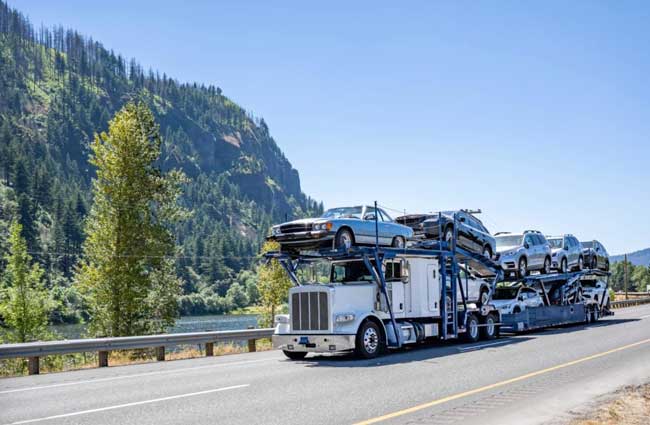
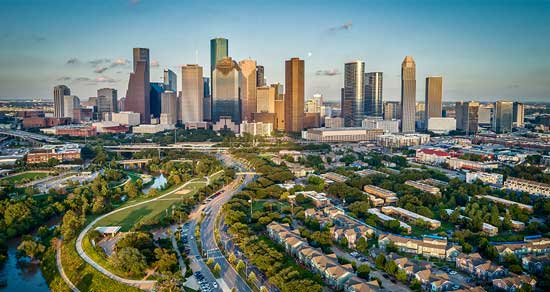
Quick and Easy Steps
How our Texas car shipping works
Having introduced ShipYourCarNow, it’s time to explore their Texas car shipping process. It’s a straightforward three-step process that begins with requesting a quote, proceeds to schedule a pickup, and concludes with receiving delivery. Sounds simple, right?
Let’s break this down a bit further.
-
Step 1
Requesting a quote serves as the initial step in the car shipping process. This can be done either by phone or through an online form available on ShipYourCarNow’s website. You’ll need to provide details about:
- Your vehicle
- The desired transportation route
- The pick-up and delivery locations
- Preferred shipping dates
Other essential details include vehicle information and preferred shipping dates.
Upon provision of these details, a free car shipping quote for your Texas car shipping needs is generated.
-
Step 2
Upon receipt of your quote, the subsequent step involves scheduling your pickup. After you’ve submitted your inquiry, a shipping specialist will be assigned to coordinate a suitable pickup time and location for you. You can book your order online, over the phone, or via email at one of our pickup and delivery locations.
Just remember that providing detailed information about your vehicle and its destination is essential for getting accurate car shipping quotes.
-
Step 3
Receiving your vehicle at your chosen location constitutes the concluding step in the car shipping process. Once your car arrives at its destination in Texas, you can schedule a convenient time and location for delivery.
The carrier will ensure that your vehicle is safely transported to your requested location in the same condition as it was picked up.
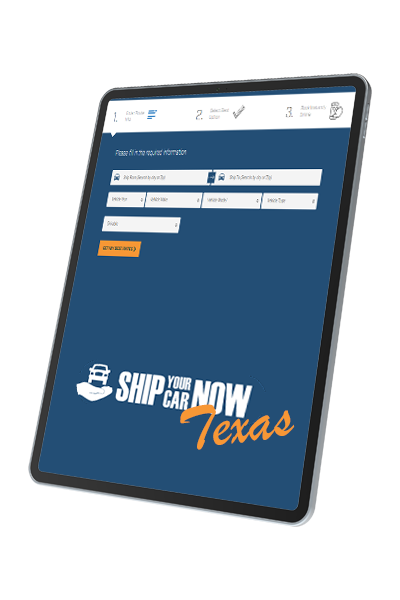
Shipping Your Car to Texas - Cost & Delivery Estimates
You might be curious about the cost and duration of shipping a car to Texas. Well, these factors can vary greatly depending on a number of variables. On average, the general cost to ship a car is approximately $1,150, but this can range from $550 to $2,450, depending on various factors such as distance and transportation method.
For example, if you’re opting for open carrier shipping, costs can range from $550 to $1,600. However, if you prefer enclosed carrier shipping for added protection, you’re looking at costs averaging between $1,000 and $2,450. Also, keep in mind that car shipping costs are calculated per mile, with prices between $0.60 and $1.70 per mile, and longer distances tend to lower the cost per mile.

Shipping Your Car from Texas - Cost & Delivery Estimates
Likewise, when dispatching a car from Texas, the associated costs and delivery times hinge on an array of factors. On average, the general cost to ship a car from one place to another in the United States is approximately $1,150, or $1.15 per mile for a distance of 1,000 miles.
Again, the method of transportation plays a significant role in the overall costs. Open carrier shipping options range between $550 to $1,600, while enclosed carrier shipping is more premium, costing between $1,000 and $2,450. Keep in mind that prices for car shipping can vary between $0.60 to $1.70 per mile depending on factors such as distance, shipping method, and vehicle size.
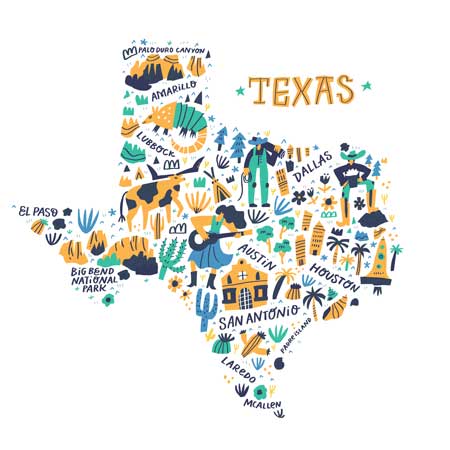
Factors Affecting Texas Car Shipping Costs & Timelines
A multitude of factors can influence the costs and timelines of Texas car shipping. For instance, shipping a car across the country usually costs more than within the same state due to increased fuel and time requirements for long-distance transport. Also, transporting a vehicle to remote locations typically incurs higher costs compared to major cities due to the additional distance carriers must travel.
Even the size and type of your vehicle, such as sedans versus SUVs or trucks, can influence shipping costs, with larger vehicles costing more to transport due to space and fuel usage. Additionally, factors like the time of year and the cost of fuel can affect car shipping prices, with summer being the most expensive season due to high demand and higher fuel prices leading to increased transportation costs.
How much does car shipping cost to or from Texas?
You’re probably wondering, what’s the bottom line? How much does car shipping really cost to or from Texas? For a more concrete idea, let’s look at some figures. The average cost to ship a car is approximately $1,150, which equates to $1.15 per mile for a distance of 1,000 miles.
However, car shipping costs can range from $0.60 to $1.70 per mile, with the method of transport and the size of the vehicle being significant factors. For instance, shipping a compact car may cost between $550 and $1,600 using an open carrier, while larger vehicles could cost an additional $150 to $250. To get a more accurate idea of the cost, it’s best to obtain a car shipping estimate.
For enclosed shipping, which offers protection from the elements, the costs typically range between $1,000 and $2,450, translating to about $0.90 to $1.70 per mile.
Cost & Delivery Estimates - Shipping Your Car from Texas
| Ship Car From | Ship Car To | Estimated Route Distance | Estimated Delivery Time | Estimated Cost |
|---|---|---|---|---|
| Texas | Florida | 1368.1 | 3-5 days | $655 |
| Texas | California | 1406.5 | 3-5 days | $695 |
| Texas | Hawaii | 3525.47 | 3-5 days | $2585 |
| Texas | Virginia | 1401.2 | 3-5 days | $715 |
| Texas | Illinois | 994.1 | 3-4 days | $625 |
Cost & Delivery Estimates - Shipping Your Car to Texas
| Ship Car From | Ship Car To | Estimated Delivery Time | Estimated Route Distance | Estimated Cost |
|---|---|---|---|---|
| Florida | Texas | 3-5 days | 1368.1 | $855 |
| California | Texas | 3-5 days | 1406.5 | $965 |
| Hawaii | Texas | 8-19 days | 3525.47 | $2225 |
| Virginia | Texas | 3-5 days | 1401.2 | $855 |
| Illinois | Texas | 3-4 days | 994.1 | $735 |
*Disclaimer: Please note that all durations, distances, and estimated costs provided in this table are general or best estimates. Actual shipping durations, distances, and costs may vary depending on various factors such as specific origin and destination locations, vehicle type, shipping method, seasonal variations, and other circumstances. Each shipping scenario is unique, and additional factors not accounted for in these estimates may impact the final shipping details. For accurate and personalized shipping information tailored to your specific needs, please start a free quote.
Call for a Personalized Texas Auto Transport Estimate
How long does car shipping take to or from Texas?
So, you’ve got a handle on the costs, but what about the timeline? How long does it take to ship a car to or from Texas? The short answer is it depends. The proximity of pick-up and delivery locations to major highways like I-5 significantly affects the speed of car shipping to or from Texas.
Moreover, cities located on major routes like CA-99 and US-101 in California can influence the time it takes to ship a car from Texas. Shipping a car to or from challenging locations, such as those away from major highways or in areas with road restrictions and tolls, can incur additional time and costs.
Even factors like local gas prices and toll costs in the destination state can impact the duration and cost of car shipping from Texas.

Choosing the Right Texas Car Shipping Company
Selecting the appropriate Texas car shipping company is pivotal to guarantee a seamless and successful car shipping process. But with so many options out there, how do you make the right choice? The first thing to do is check the company’s customer reviews on platforms like Google, Yelp, or Better Business Bureau.
You should also assess the company’s experience in the auto transport industry and ensure the car shipping company, which may also be an auto transport broker:
- is licensed and has the required liability insurance as per state regulations and the U.S. Department of Transportation
- has a good reputation and positive customer reviews
- offers competitive pricing and transparent billing methods
- provides a variety of carrier options to meet your specific needs
- guarantees a reasonable shipping timeline
Considering these factors will help you choose a reliable and trustworthy car shipping company among various car shipping companies.
Preparing Your Vehicle for Texas Car Shipping
After settling on a credible Texas car shipping company, the subsequent task involves readying your vehicle for transit. This involves several tasks, such as cleaning your car, removing personal items, and ensuring your car is in good working condition.
It’s also important to:
- Disengage any alarm systems to prevent disturbances during transportation
- Keep the fuel tank low to reduce weight and avoid additional charges
- Prior to shipping, inspect your vehicle and adjust tire pressure to reduce the risk of damage during loading and unloading.
What’s the best way to ship your car to or from Texas?
Having learned how to prepare your car for transit, it’s time to discuss the optimal method of shipping your car to or from Texas. Working with a reliable auto transport company like ShipYourCarNow is highly recommended. Their services are tailored to meet your specific needs, ensuring a smooth and hassle-free car shipping experience.
Whether you’re shipping a standard vehicle or a high-end model, ShipYourCarNow offers options to suit your needs and budget. And the best part? Their process is simple and straightforward, involving three easy steps: getting a quote, booking the order, and vehicle delivery.

What is the cheapest way to ship a car from Texas?
While the optimal method for shipping your car could be apparent, identifying the most cost-effective approach may necessitate additional consideration. Finding the cheapest way to ship a car from Texas involves considering various options and being aware of potential hidden fees and inadequate insurance coverage. For a cost-effective option, open carrier transport is often a good choice, especially for standard vehicles.
However, it’s essential to keep in mind that the cheapest option might not always be the best one. You should always consider factors like the reputation of the car shipping company, the level of service, and the adequacy of insurance coverage. After all, peace of mind and the safety of your vehicle are priceless.
Pro tips for transporting a car to or from Texas
Shipping a car to or from Texas may seem daunting, but armed with a few expert tips, you can ensure a seamless and successful experience. Here are some things to keep in mind:
- Consider the cost of living, taxes, and energy deregulation in Texas.
- Remember to obtain a valid Texas driver’s license upon arrival.
- Be prepared for traffic in major metropolitan areas.
Another tip is to book your car shipping service well in advance to secure better rates and avoid last-minute fees. And if possible, opt for midweek shipping, as it may be cheaper than weekend services.
Lastly, always ensure to inspect your vehicle for new damage upon delivery and check for all accessories before signing the delivery paperwork.
Door-to-Door vs. Terminal-to-Terminal Services in Texas
For car shipping services in Texas, the options range from door-to-door to terminal-to-terminal services. Door-to-door transport involves your vehicle being picked up and delivered directly to your specified addresses, which could be a residential, business, or commercial location. This service offers convenience and flexible pick-up and delivery times, even outside traditional business hours.
On the other hand, terminal-to-terminal auto transport involves shipping vehicles between secured terminal yards, where customers can drop off or pick up their vehicles. This option can be more cost-effective, especially if the pickup and delivery locations are close to the terminals and no storage fees are incurred. However, keep in mind that terminal-to-terminal shipping may not be as convenient if the terminal’s operating hours do not align with your schedule or if terminals are far from your location.

Enclosed vs. Open Transport for Texas Car Shipping
In addition to selecting between door-to-door and terminal-to-terminal services, another decision involves choosing between enclosed or open transport for Texas car shipping. Open transport involves shipping a car on a two-level trailer and is suitable for all vehicle types, especially standard or used cars. It provides minimal protection against weather and road debris, which may result in the car arriving dirty, but it’s more economical and faster due to the ability to ship more vehicles simultaneously and lower fuel costs.
On the other hand, enclosed car shipping services transport vehicles in a fully enclosed trailer, offering higher security and protection in transit. This option is often used for new, vintage, or collectible vehicles and protects them from weather conditions and road debris. Enclosed auto transport carriers are typically more expensive than open transport due to lower vehicle capacity and higher fuel costs, but they offer improved security and protection in transit.
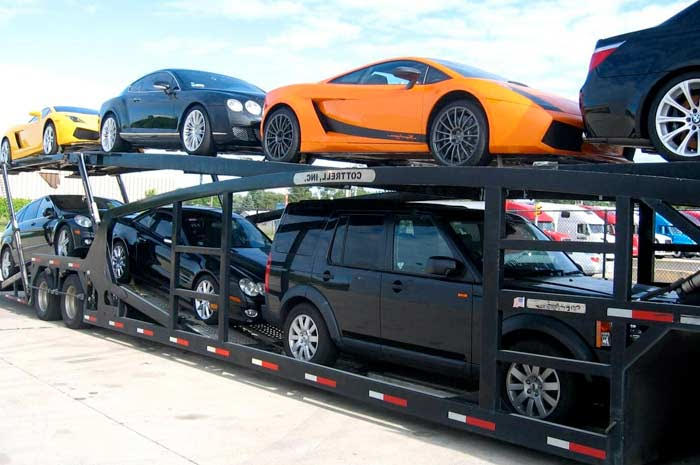
Insurance Coverage and Protection for Texas Car Shipping
Insurance coverage and protection is a vital aspect of Texas car shipping that should never be disregarded. In Texas, auto transport companies provide full insurance for vehicles during shipment, from the moment they are loaded onto the truck until they are unloaded. Carrier’s insurance typically includes a liability coverage of up to $1,000,000 and cargo coverage of up to $250,000.
Before shipping, it’s essential to inspect your vehicle alongside the driver for any damages, noting any issues on the Bill of Lading to ensure insurance coverage in the event of transport damage. Also, remember that personal or household goods are not covered by the driver’s responsibility, so make sure to remove any such items from your vehicle before shipping.
Inoperable Vehicle Shipping in Texas
Is it possible to ship an inoperable vehicle? The answer is yes. Shipping an inoperable vehicle in Texas may require additional equipment and expenses, but reputable companies like ShipYourCarNow can accommodate such needs. This involves providing detailed information about your vehicle, including its make, model, year, dimensions, and specific condition issues, to determine the right equipment and transportation methods.
Keep in mind that inoperable vehicles often need special handling, such as specific loading techniques or equipment, due to various conditions like missing keys or flat tires. However, experienced carriers with a history in the business can provide tailored solutions for each unique non-running vehicle, with transparent communication throughout the process.
New Texas Residents: Driver's License and Vehicle Registration
As a new Texas resident with a freshly shipped vehicle, there are a few steps to undertake upon arrival. First, you have up to 90 days after moving to Texas to legally drive with your valid, unexpired driver’s license from another U.S. state, U.S. territory, Canadian province, or qualifying country.
Before the 90-day grace period ends, you must apply for a Texas driver’s license in person at a driver license office. Also, remember to register your vehicle in Texas. These steps are necessary to comply with state regulations and legally drive your vehicle in the Lone Star State.

Tips for a SmoothTexas Car Shipping Experience
To conclude our guide, here are some final pointers for a seamless Texas car shipping experience. Before shipping, ensure your car is clean and alarms are disabled to facilitate a thorough inspection and prevent battery drain. Also, document your vehicle’s condition with photos or video prior to transport as a reference for any potential transit damage.
Reduce costs by choosing terminal-to-terminal service over door-to-door if it’s convenient for your situation. Keep the fuel tank only a quarter full to lower the vehicle’s weight and minimize shipping costs. And remember, always inspect your vehicle for new damage upon delivery and check for all accessories before signing the delivery paperwork.
Frequently Asked Questions
How do I transport my car to Texas?
You can transport your car to Texas by booking a service with a reputable car shipping company, such as ShipYourCarNow, and coordinating the pickup and delivery times with them. This is one of the safest and most convenient options for relocating your vehicle to Texas.
How much does it cost to ship a car from Texas to LA?
Can I buy a car in Texas and ship it to California?
How does the Texas car shipping process work?
Summary
We’ve covered a lot of ground in this blog post, from choosing a top-rated Texas auto transport company to understanding the costs, timelines, and factors affecting car shipping to or from Texas. We’ve discussed how to prepare a vehicle for shipping and explored different shipping options like door-to-door, terminal-to-terminal, enclosed, and open transport.
The key takeaway is that shipping a car to or from Texas doesn’t have to be complicated. With a reliable auto transport company like ShipYourCarNow, you can navigate this process smoothly and efficiently. So whether you’re planning a move to the Lone Star State or shipping a car from Texas to another location, remember these tips for a successful and stress-free car shipping experience.
ShipYourCarNow service areas in Texas by Zip Code
| Ship Car From | Ship Car To |
|---|---|
| Arlington | 75050, 75051, 75052, 76001, 76002, 76006, 76010, 76011, 76012, 76013, 76014, 76015, 76016, 76017, 76018, 76040, 76060, 76063, 76112, 76119, 76120 and surrounding areas |
| Austin | 78610, 78613, 78617, 78641, 78652, 78653, 78660, 78664, 78681, 78701, 78702, 78703, 78704, 78705, 78712, 78717, 78719, 78721, 78722, 78723, 78724, 78725, 78726, 78727, 78728, 78729, 78730, 78731, 78732, 78733, 78734, 78735, 78736, 78737, 78738, 78739, 78741, 78742, 78744, 78745, 78746, 78747, 78748, 78749, 78750, 78751, 78752, 78753, 78754, 78756, 78757, 78758, 78759 and surrounding areas |
| Corpus Christi | 78362, 78370, 78373, 78374, 78380, 78401, 78402, 78404, 78405, 78406, 78407, 78408, 78409, 78410, 78411, 78412, 78413, 78414, 78415, 78416, 78417, 78418, 78419 and surrounding areas |
| Dallas | 75001, 75006, 75007, 75019, 75032, 75039, 75041, 75043, 75050, 75051, 75052, 75060, 75061, 75062, 75063, 75075, 75080, 75081, 75087, 75088, 75089, 75093, 75098, 75104, 75115, 75116, 75126, 75134, 75141, 75149, 75150, 75159, 75166, 75182, 75201, 75202, 75203, 75204, 75205, 75206, 75207, 75208, 75209, 75210, 75211, 75212, 75214, 75215, 75216, 75217, 75218, 75219, 75220, 75223, 75224, 75225, 75226, 75227, 75228, 75229, 75230, 75231, 75232, 75233, 75234, 75235, 75236, 75237, 75238, 75240, 75241, 75243, 75244, 75246, 75247, 75248, 75249, 75251, 75252, 75253, 75254, 75270, 75287, 75390 and surrounding areas |
| El Paso | 79821, 79835, 79901, 79902, 79903, 79904, 79905, 79906, 79907, 79908, 79911, 79912, 79915, 79920, 79922, 79924, 79925, 79927, 79928, 79930, 79932, 79934, 79935, 79936, 79938, 88063 and surrounding areas |
| Fort Worth | 76006, 76008, 76012, 76013, 76020, 76028, 76036, 76039, 76040, 76051, 76052, 76053, 76060, 76102, 76103, 76104, 76105, 76106, 76107, 76108, 76109, 76110, 76111, 76112, 76114, 76115, 76116, 76117, 76118, 76119, 76120, 76123, 76126, 76127, 76129, 76131, 76132, 76133, 76134, 76135, 76137, 76140, 76148, 76155, 76164, 76177, 76179, 76244, 76247, 76248, 76262 and surrounding areas |
| Garland | 75040, 75041, 75042, 75043, 75044, 75048, 75081, 75082, 75089, 75098, 75150, 75218, 75228, 75238, 75243 and surrounding areas |
| Houston | 77002, 77003, 77004, 77005, 77006, 77007, 77008, 77009, 77010, 77011, 77012, 77013, 77014, 77015, 77016, 77017, 77018, 77019, 77020, 77021, 77022, 77023, 77024, 77025, 77026, 77027, 77028, 77029, 77030, 77031, 77032, 77033, 77034, 77035, 77036, 77037, 77038, 77039, 77040, 77041, 77042, 77043, 77044, 77045, 77046, 77047, 77048, 77049, 77050, 77051, 77053, 77054, 77055, 77056, 77057, 77058, 77059, 77060, 77061, 77062, 77063, 77064, 77065, 77066, 77067, 77068, 77069, 77070, 77071, 77072, 77073, 77074, 77075, 77076, 77077, 77078, 77079, 77080, 77081, 77082, 77083, 77084, 77085, 77086, 77087, 77088, 77089, 77090, 77091, 77092, 77093, 77094, 77095, 77096, 77098, 77099, 77201, 77336, 77338, 77339, 77345, 77346, 77357, 77365, 77373, 77375, 77377, 77379, 77386, 77388, 77396, 77401, 77406, 77407, 77429, 77433, 77447, 77449, 77450, 77477, 77478, 77484, 77489, 77493, 77494, 77498, 77503, 77504, 77506, 77520, 77530, 77532, 77536, 77546, 77547, 77571, 77587, 77598 and surrounding areas |
| Lubbock | 79382, 79401, 79403, 79404, 79406, 79407, 79410, 79411, 79412, 79413, 79414, 79415, 79416, 79423, 79424 and surrounding areas |
| Plano | 75010, 75013, 75023, 75024, 75025, 75074, 75075, 75082, 75093, 75094, 75252, 75287 and surrounding areas |
| San Antonio | 78023, 78056, 78073, 78109, 78112, 78154, 78201, 78202, 78203, 78204, 78205, 78207, 78208, 78209, 78210, 78211, 78212, 78213, 78214, 78215, 78216, 78217, 78218, 78219, 78220, 78221, 78222, 78223, 78224, 78225, 78226, 78227, 78228, 78229, 78230, 78231, 78232, 78233, 78234, 78235, 78236, 78237, 78238, 78239, 78240, 78242, 78243, 78244, 78245, 78247, 78248, 78249, 78250, 78251, 78252, 78253, 78254, 78255, 78256, 78257, 78258, 78259, 78260, 78263, 78264, 78266 and surrounding areas |
Your Partner for Nationwide Auto Transport and more!
Boat
Ship Your Boat
ShipYourCarNow: Your go-to for vehicle transport, including boats! With us, your vessel moves seamlessly, whether across the country or just across waters. Count on our top-notch service and reliability. Choose ShipYourCarNow for the best in boat transportation.
Motorcycle
Ship Your Bike
Whether you're relocating, purchasing online, or gearing up for a road trip, knowing the ins and outs of motorcycle shipping costs is crucial. Trust ShipYourCarNow to handle your bike transport with care and expertise, ensuring a smooth ride every time.
RV
Ship Your RV
When seeking an RV transport partner, critical factors come into play: versatile transport options, accreditation, and customer feedback. At ShipYourCarNow, we tick all the boxes. Count on us for reliable, accredited service backed by glowing customer reviews.
International
Ship Internationally
ShipYourCarNow ensures your vehicle's safe and reliable transport across international borders through our international car shipping service. Count on us for seamless transportation, guaranteeing your peace of mind every step of the way.





